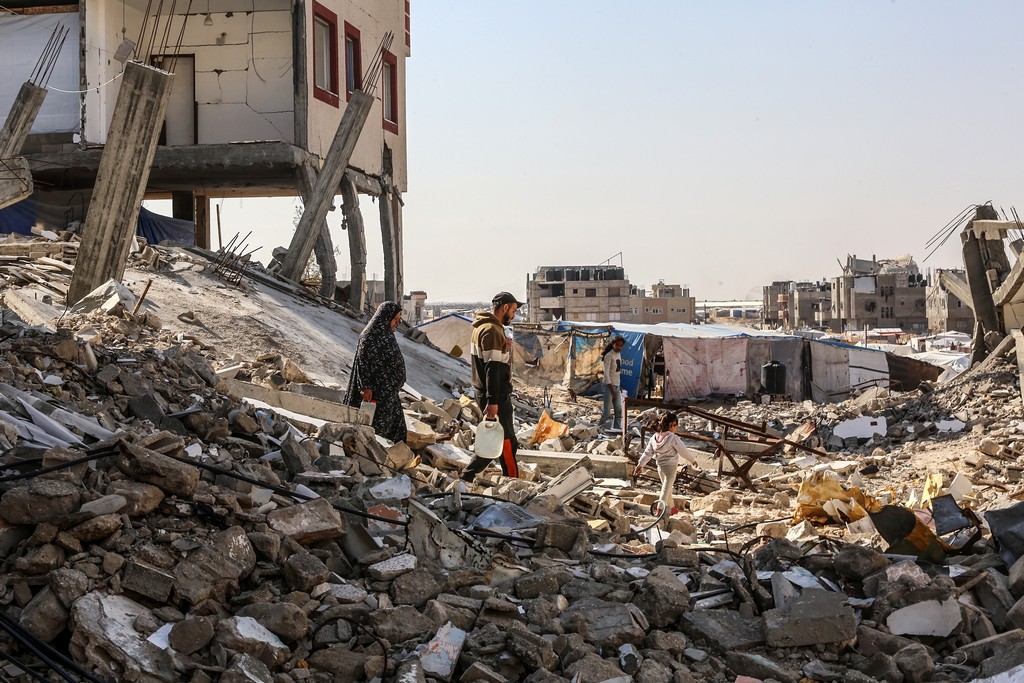Israel had no choice: Military escalation is a necessary reset for hostage talks
The Israeli strikes on the Gaza Strip are primarily intended to break the stalemate that has developed following the deadlock in hostage release negotiations, a stalemate in which Hamas has been enjoying a de facto extension of the ceasefire, reorganizing its forces and strengthening its governance, without returning additional hostages or paying any other price.
An additional goal of the operation is to preserve Israel’s commitment to achieving all war objectives, in light of the questions raised regarding this, following the prolonged ceasefire and the gap between threats to have all hell break loose and the actual reality.
The timing of the attack, its intensity, and the extent of casualties surprised Hamas. Its senior leaders are likely still wondering whether this is a limited action meant to shock and send a message or the beginning of a sustained operation. The statement by its senior officials linking the renewal of fighting to the fate of the hostages hints at the way it may act to stop Israel. This threat requires the political leadership to formulate a series of Draconian measures and declare that they will be carried out if Hamas harms the hostages.
The attack on the Gaza Strip last night signaled the failure of Israel’s current negotiation efforts to bring Hamas to agree to additional hostage releases under the terms and prices of Phase I. Hamas, whose self-confidence and capabilities have strengthened considerably since the beginning of the ceasefire, rejected Israel’s demand. In its view, the hostages in its possession are the only weapon it has left to impose its four demands regarding the end of the war:
- Israeli commitment with international guarantees not to resume fighting.
- IDF withdrawal to the October 6 lines.
- Israeli commitment to allow the Gaza reconstruction process.
- Release of additional terrorists from Israeli prisons, in exchange for returning hostages, according to an agreed formula.
Ostensibly, Israel’s interest in receiving the hostages and continuing the fighting stands in complete contradiction to that of Hamas, but in practice Hamas has flexibility that has not yet been exhausted. This stems from the large number of hostages in its possession, which allows it to realize additional deals for some of them, and this is what Israel has been aiming its efforts toward.
Hamas is currently preparing for all possibilities. The organization’s leadership is investing efforts to restrain Israel through international diplomatic pressure, against the backdrop of the large number of casualties and while stressing its desire to continue on the ceasefire path toward ending the war. It is not impossible that it will also pass “positive signals” to the “mediators” about willingness to continue discussing “small” deals, as a tactic to break Israel’s offensive momentum.
“The enemy will not achieve through war and destruction what it failed to achieve through negotiation,” promised Eizat al-Rishq, a member of Hamas’ political bureau, in response to the IDF attack. We must concede that the challenge Israel faces is not simple, but the alternative Hamas presents – surrendering to its dictates and leaving it as the central power factor in Gaza – limits its options. The conditions under which it is required to operate to achieve its goals today are incomparably better than those at the beginning of the war: the backing from the Trump administration and the umbrella it provides against the diplomatic system and international institutions, the change in the Middle East balance of power, the situation in other combat zones, the state of Hamas and, distinctly, the experience and confidence gained by IDF forces.
Tightening and significantly hardening the blockade along with increasing pressure through airstrikes, evacuating areas and capturing them, may force Hamas to make its stance more flexible. In addition, it is right to shut down internet activity in Gaza – which helps Hamas apparatuses control the situation and maintain their governance – and to continue targeting efforts against senior organization officials abroad.
In view of the danger to the hostages’ wellbeing and alongside the steps presumably being taken in Israel’s proactive operations, it would be appropriate for Israel’s leadership to consider immediately approving a series of Draconian measures (such as the permanent deportation of Hamas leaders from the West Bank and imposing the death penalty on terrorists) and to declare that they will be implemented if harm comes to the hostages.
Published in Israel Hayom, March 18, 2025.

